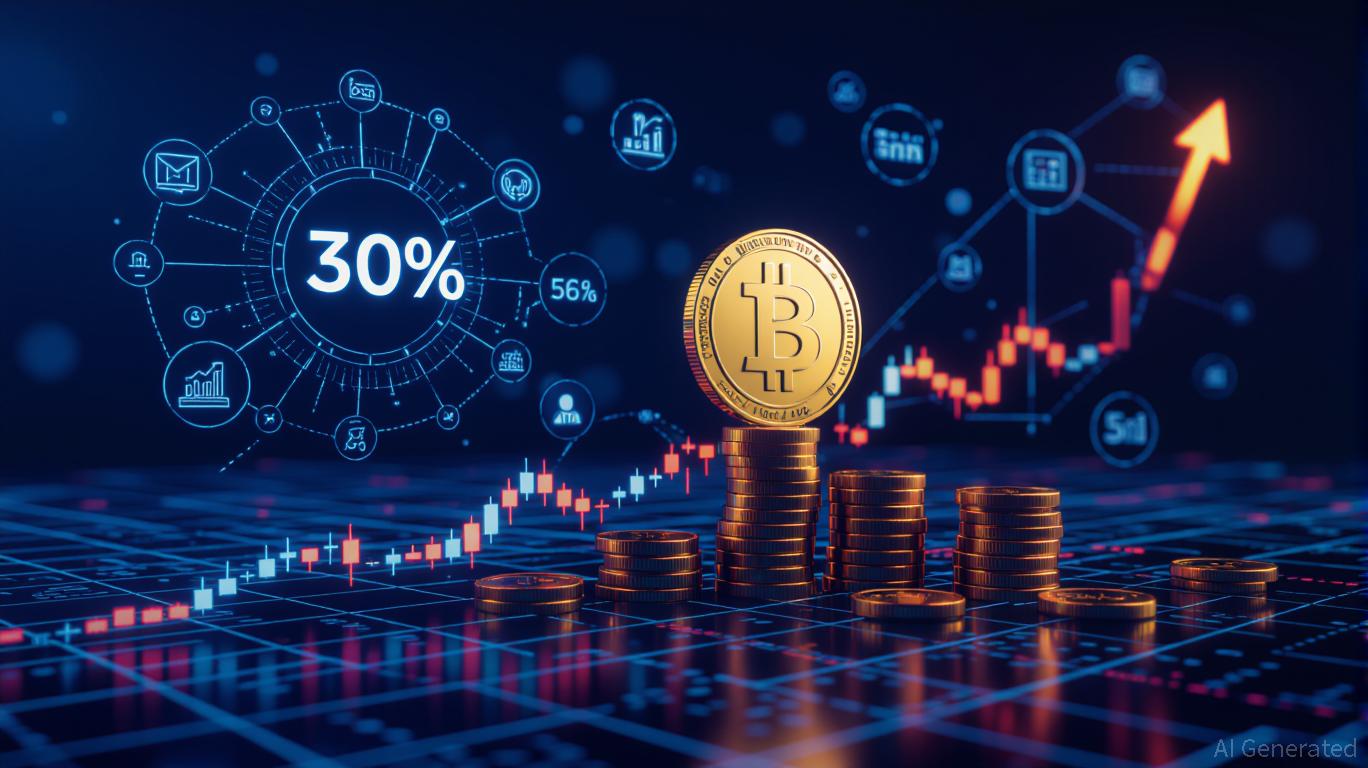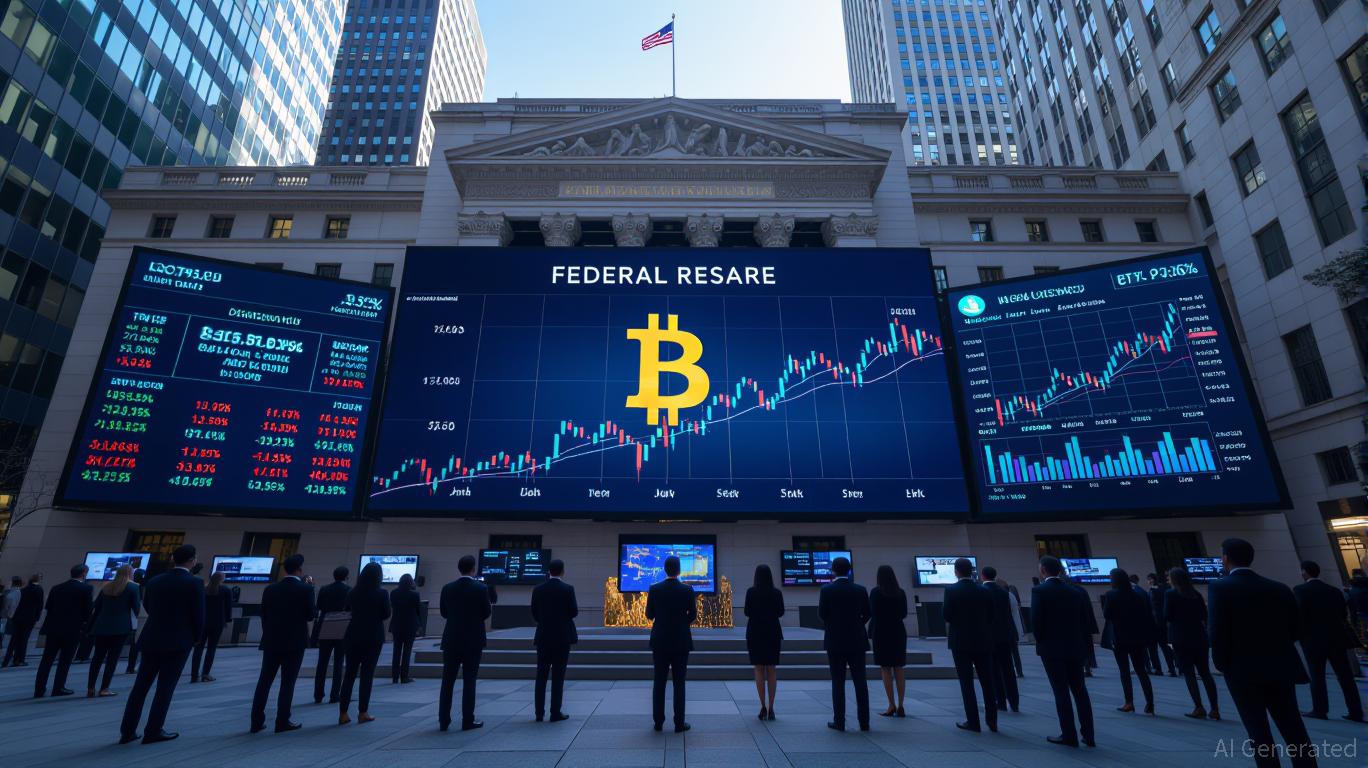AAVE Rises 8.63% Over the Past Week: DeFi Buyback Momentum and Treasury Advancements
- Aave's $50M annual buyback program shifts DeFi tokenomics toward deflation, redirecting protocol earnings to reduce $AAVE supply. - The 7-day 8.63% price surge reflects growing adoption of buyback strategies by DeFi platforms like EtherFi and Maple Finance. - BTCS Inc. leverages Aave's 24/7 automated lending to cut borrowing costs by 5-6% while expanding Ethereum holdings through DAT strategy. - Analysts predict deflationary models will enhance price resilience, with metrics like protocol revenue replaci
As of November 9, 2025,
AAVE, recognized as a top decentralized lending protocol, is undergoing a significant transformation as it adopts deflationary tokenomics, a trend gaining momentum in DeFi. After announcing a $50 million yearly buyback plan, the Aave governance community approved a major change in how revenue is distributed, allocating part of the protocol’s income to repurchasing tokens on the open market. This represents a notable shift away from the inflationary approaches that previously prevailed in the sector, highlighting a more mature approach to DeFi governance and economic planning. By reducing the available supply of $AAVE, the protocol aims to enhance long-term value for holders and better align incentives with ongoing network development and engagement.
This buyback strategy is part of a larger movement that is reshaping DeFi, with platforms such as EtherFi,
Aave’s impact goes beyond its buyback program. BTCS Inc., a company listed on Nasdaq, has made Aave a key part of its Digital Asset Treasury (DAT) strategy, using the platform to manage liquidity and grow its
AAVE now exemplifies the broader shift among DeFi protocols from speculative expansion to models focused on profit-sharing and creating token scarcity. Experts believe these foundational changes will help stabilize prices during market swings and strengthen long-term value for investors. This evolution is also influencing how DeFi tokens are assessed, with greater emphasis now placed on metrics like protocol revenue and actual yield rather than purely speculative growth figures.
Backtest Hypothesis
To assess how effective the recent buyback trend might be, one could run a backtest analyzing Aave’s historical price reactions to similar market events. For example, an event-driven backtest could look for occasions when Aave’s price dropped by a set percentage—such as 10%—and then measure the average price movement in the days that followed. The underlying idea is that deflationary actions like buybacks could help establish a price floor and support quicker recoveries. This would involve defining which tokens to include (e.g., AAVE), setting the event parameters (e.g., a 10% daily drop), and outlining the response (e.g., purchasing at the next day’s open and holding for five days). By applying clear guidelines and limitations, such a backtest could offer data-driven evidence on whether Aave’s deflationary approach has historically contributed to price stability and rebounds.
Disclaimer: The content of this article solely reflects the author's opinion and does not represent the platform in any capacity. This article is not intended to serve as a reference for making investment decisions.
You may also like
ICP Value Jumps 30% Following Significant Network Update and Growing Interest from Institutions
- ICP's 30% price surge follows a November 2025 network upgrade introducing Caffeine, an AI tool for Web3 development, boosting on-chain AI integration. - Institutional adoption grows via partnerships like HashKey-Kraken, while ICP's DeFi TVL hit $237B, though DApp engagement fell 22.4% in Q3 2025. - Experts highlight Caffeine's accessibility benefits but caution over missing technical upgrades in scalability and storage, raising questions about long-term viability. - Competition from Ethereum and Solana ,

Is Wall Street starting to doubt the potential of AI?
Federal Reserve Strategies and Solana’s Price Rally: An Analysis of Macro Influences on Cryptocurrency Markets
- Fed's 2025 rate cut pause and dovish policy injected liquidity, boosting crypto demand including Solana (SOL). - Solana's 3,800+ TPS, $10.3B DeFi TVL, and institutional ETFs ($417M raised) highlight its technical and capital appeal. - Despite 20% price correction, Solana attracted $421M inflows in late 2025, showing institutional demand resilience. - Proposed Fed gold-for-bitcoin policy and Trump-era pro-growth signals amplify crypto's macroeconomic relevance.

Bitcoin’s Price Rally in November 2025: A Turning Point for Institutional Investors?
- Bitcoin's November 2025 surge to $145,000 sparks debate: institutional adoption or speculative frenzy masking structural fragility? - Macroeconomic stability and $72M+ infrastructure investments (e.g., Galaxy Digital in Canaan) signal maturing institutional strategies, contrasting ETF outflows and leveraged liquidations. - Regulatory clarity via U.S. spot Bitcoin ETFs (BlackRock, Fidelity) creates legitimacy but exposes crypto to traditional finance dynamics amid $1B+ ETF outflows. - Anchorage Digital's
